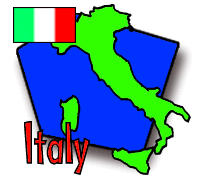Person of the Day: our host families in Ferrara
Place of the Day: Basilica di San Vitale, and Mausoleo di Galla Placidia, Ravenna
Tech Fact of the Day: Parco del Delta
Group Dispatch, May 6-7

- In the middle of the journey of our life,
- I came to myself within a dark wood
- where the straight way was lost.
- Ah how hard a thing it is to tell of that wood,
- savage and harsh and dense.
- The thought of which renews my fear.
- So bitter is it that death is hardly more.
- But to give account of the good, which I found there
- I will tell of the other things I noted there.
- I came to myself within a dark wood
Questions? Ask Padraic ![]() !
!
Return to Fast Facts
 |
 |
 |
 |
 |
|
Itinerary/ Journal |
Discussions |
About Italy |
eDscape Projects |
Scrapbook |
|
|
|
|
|
| Internet access in Italy was provided by ITNet. Internet access in the Trieste region of Italy and hosting for the Italian version of this site have been provided by Spin. |
Copyright 1997-99 BikeAbout. All rights reserved.
